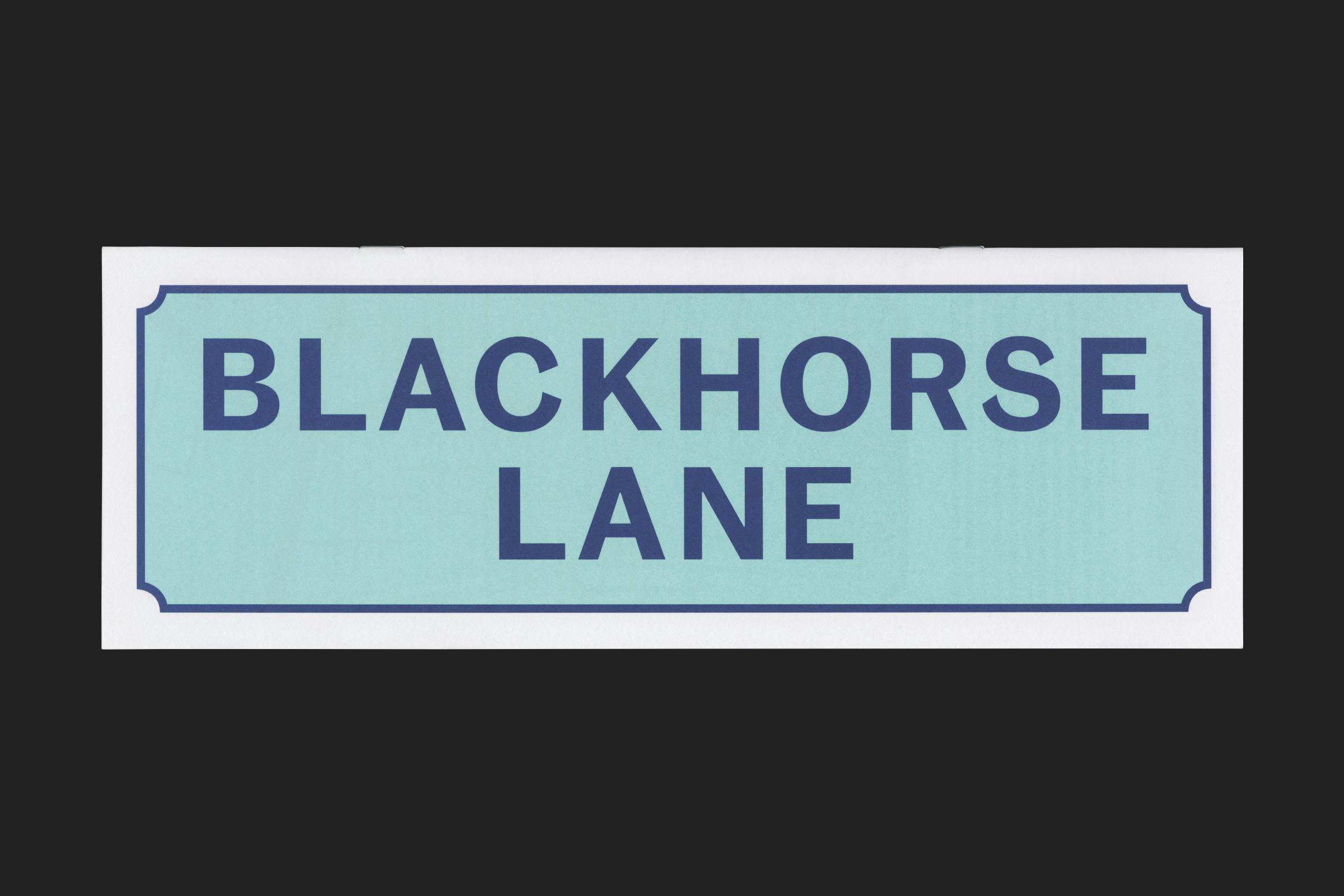
Blackhorse Lane: A Short History of Creative Spaces
1/2
A booklet to accompany a walking tour of the creative spaces on Blackhorse Lane* in Walthamstow, London, for London Design Festival 2022. Containing stories and images showcasing the commercial and artistic heritage of the area that now forms part of the Waltham Forest ‘Creative Enterprise Zone’.
Travelling from Blackhorse Road Station†, the booklet takes you to seven different sites. From the ‘Royal Standard’ pub, a once popular music venue, to Gnome House, the site of a WW1 aeroplane engine factory, and onwards towards the community-based Blackhorse Workshop and Switchboard Studios, a former 1950s telephone exchange.
Client
Waltham Forest
Category
Text
Kate Tattersfield
Format
148 × 210 mm
Extent
20pp
Binding
Saddle stitched
Typefaces
Calson Doric, Turnery
The design takes cues from the roads industrial past and the current graphic language of the area. Highlighting titles and headers through the use of graphic panels that hint at the wrought ironwork signage remnants that can be found adorning some buildings.
Typographic style plays on early British sans serifs, explorations into letterform shapes with a decorative leaning. Utilising a mix of two typefaces to highlight locations and key figures within the text.
The booklet is printed in two colours that nod to the transport connections of the area. A deep dark blue for the Victoria line, offset with a pastel neon blue base.
* Originally called ‘Werdestrete’, Blackhorse Lane was a Saxon route from the communal lands of Higham Hill to the nearest mills, situated at Lea Bridge to the South. The name ‘Blackhorse’ is a corruption of ‘Black House’, a mansion that stood at the southern end of the road.
† Blackhorse Road Station was opened by the Tottenham and Forest Gate Railway on 9 July 1894. Its opening changed the local area from a leafy, gentrified London suburb to industrial, with several factories and units opening up around the area. The Victoria line station opened on 1 September 1968, and this was the only station on the line to get a completely new structure above ground.
